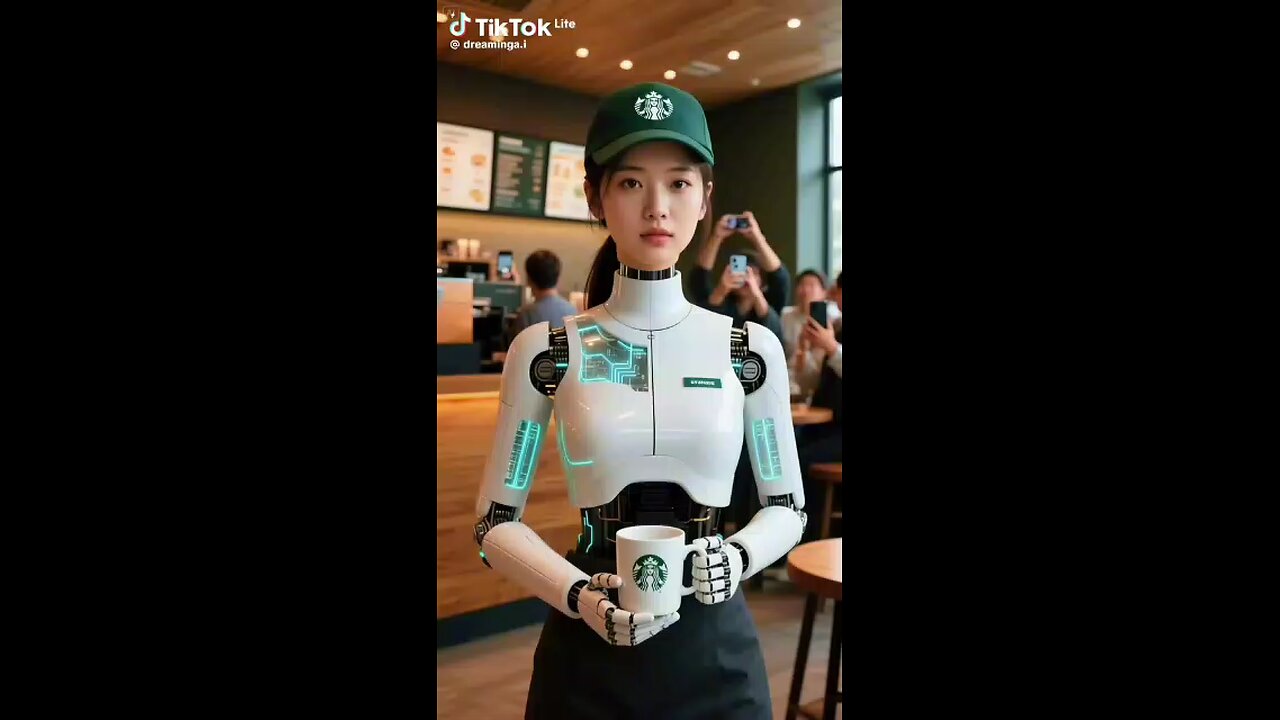Premium Only Content

AI Technology
Humanoid technology refers to the development of robots designed to resemble the human body in shape and often, in their ability to move and interact with the world. Think of them as advanced robotic machines capable of emulating human actions, reasoning, and operations.
What are they?
Humanoid robots typically possess:
* A human-like form: They usually have a torso, a head, two arms, and two legs, allowing them to walk bipedally (on two legs) and use their arms and hands to manipulate objects. Some may only replicate parts of the human body.
* Advanced mechanics: They incorporate sophisticated actuators (motors that create movement, mimicking muscles and joints), sensors (like cameras for vision, microphones for hearing, and tactile sensors for touch), and on-robot computing power.
* Artificial Intelligence (AI): Modern humanoid robots leverage AI, including machine learning, computer vision, and natural language processing, to perceive, sense, plan, and autonomously perform complex tasks. This allows them to learn, adapt, and even communicate with humans.
* Dexterity: Their hands are designed to perform complex and delicate tasks, often with multiple degrees of freedom (DOF) to mimic human finger movements, though full human dexterity is still a significant challenge.
What purpose do they serve?
The primary purpose of humanoid robots is to operate efficiently in environments that were built for humans, without requiring extensive redesign of spaces or tools. This versatility makes them incredibly promising for a wide range of applications:
* Enhanced Productivity in Workplaces:
* Manufacturing and Logistics: Humanoids can assist in assembly lines, move heavy containers, perform repetitive or physically demanding tasks, and carry out inspection and maintenance tasks in factories and warehouses. Companies like Amazon are already piloting them (e.g., Digit by Agility Robotics).
* Construction: They can potentially assist with tasks on construction sites, which are often unstructured and dynamic.
* Increased Safety:
* Humanoid robots can undertake hazardous tasks or operate in environments that are risky for human safety, such as nuclear facilities, disaster response zones (e.g., earthquake rubble search and rescue), or firefighting scenarios, thereby reducing workplace accidents and human risk.
* Assistance and Care:
* Healthcare: They can assist in patient care, provide companionship for the elderly, support individuals with disabilities in daily activities, aid in physical therapy and rehabilitation, and even assist in delicate surgeries.
* Personal Assistance: In the future, they could perform daily household tasks like cleaning, cooking, and laundry.
* Customer Service and Hospitality:
* They can greet and guide customers in shopping malls, hotels, and airports, providing information, recommendations, and assistance. Some can even handle routine tasks like check-ins or room service.
* Education and Research:
* Humanoid robots are valuable teaching aids in classrooms, helping to explain complex concepts. In research settings, they are used to study human behavior, cognition, and social interaction, leading to a better understanding of the human body and mind.
* Exploration:
* In space exploration, humanoids can assist astronauts with various tasks during missions, helping with equipment maintenance and potentially even monitoring astronaut health.
* Entertainment:
* They can engage and entertain audiences in theme parks, films, and interactive exhibits.
While still in relatively early stages of widespread commercial adoption, advancements in AI, robotics hardware, and sensor technology are rapidly increasing their capabilities. The vision is for humanoid robots to seamlessly integrate into our human-centric world, working alongside us to augment productivity, enhance safety, and provide valuable assistance across numerous sectors.
-
 2:11:49
2:11:49
Steven Crowder
3 hours agoThe Lies are Sick: Charlie Kirk's Legacy Separating Fact from Fiction
311K251 -
 LIVE
LIVE
Sean Unpaved
1 hour agoMNF Mayhem: Bucs' Stunner, Brady's Booth Drama, Shedeur's Draft Doge & the Masters on Prime
204 watching -
 1:07:59
1:07:59
NotTheBee
1 day agoOur Memories Of Charlie Kirk And What This Means For The Country
34.8K23 -
 1:19:51
1:19:51
The Rubin Report
2 hours agoListen to the Fear in Whoopi Goldberg’s Voice on 'The View' as She Gives a Chilling Warning
39.5K41 -
 LIVE
LIVE
Rebel News
31 minutes agoLibs blame Poilievre, Cons call to scrap TFW program, Carney on Canada-US relations | Rebel Roundup
243 watching -
 LIVE
LIVE
The Mel K Show
1 hour agoMORNINGS WITH MEL K - Constitution Incompatible with Globalist Goals 9-16-25
769 watching -
 35:35
35:35
Grant Stinchfield
1 hour agoRFK Jr. Speaks Out: The Pain of Assassination & the Loss of Charlie Kirk
8501 -
 1:59:33
1:59:33
Benny Johnson
3 hours agoKash Patel Testifying LIVE Now on Charlie Kirk Assassination, Trump to Declare Antifa TERRORISTS?!
72.5K61 -
 2:07:38
2:07:38
Timcast
4 hours ago🚨LIVE: Kash Patel Testifies Over Charlie Kirk Assassination In Senate | Tim Pool
82.9K61 -
 1:01:08
1:01:08
Trumpet Daily
1 hour agoTrumpet Daily LIVE | Sept. 16, 2025
6.4K1